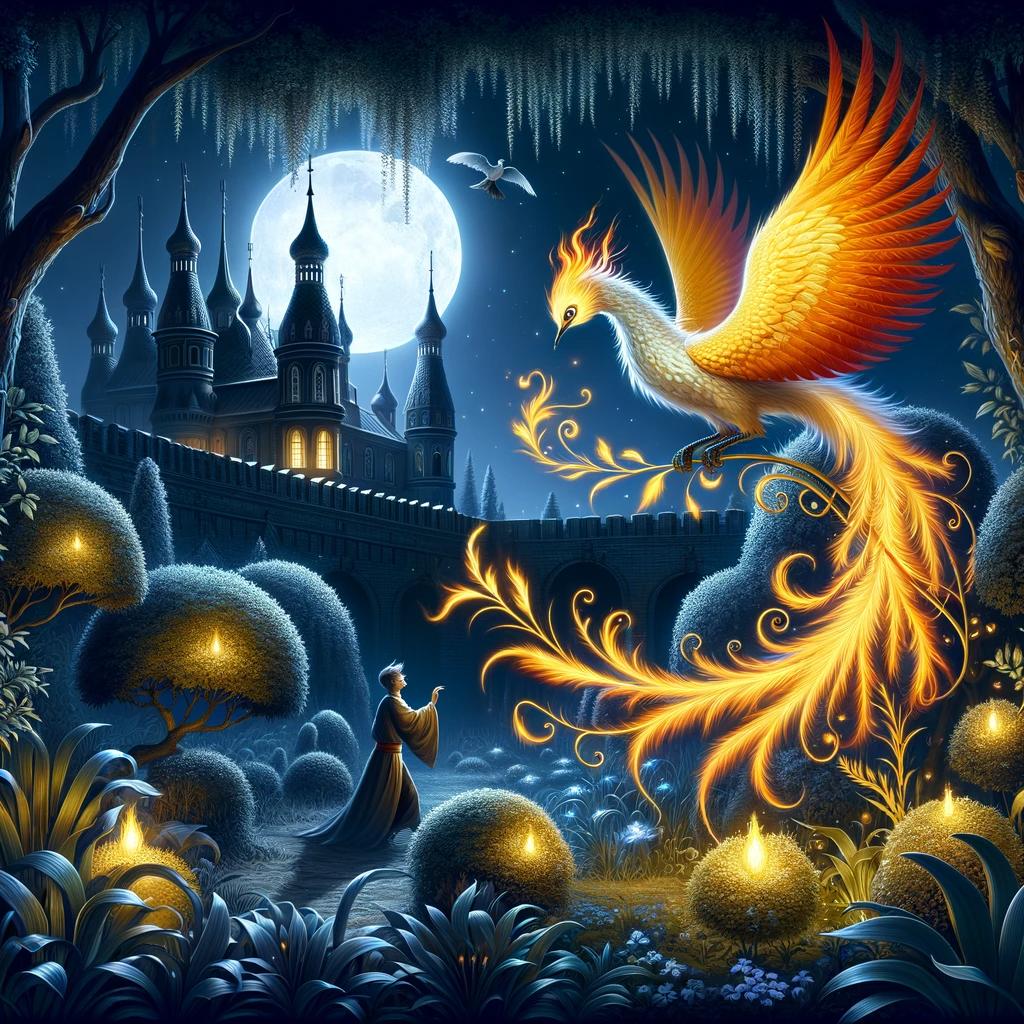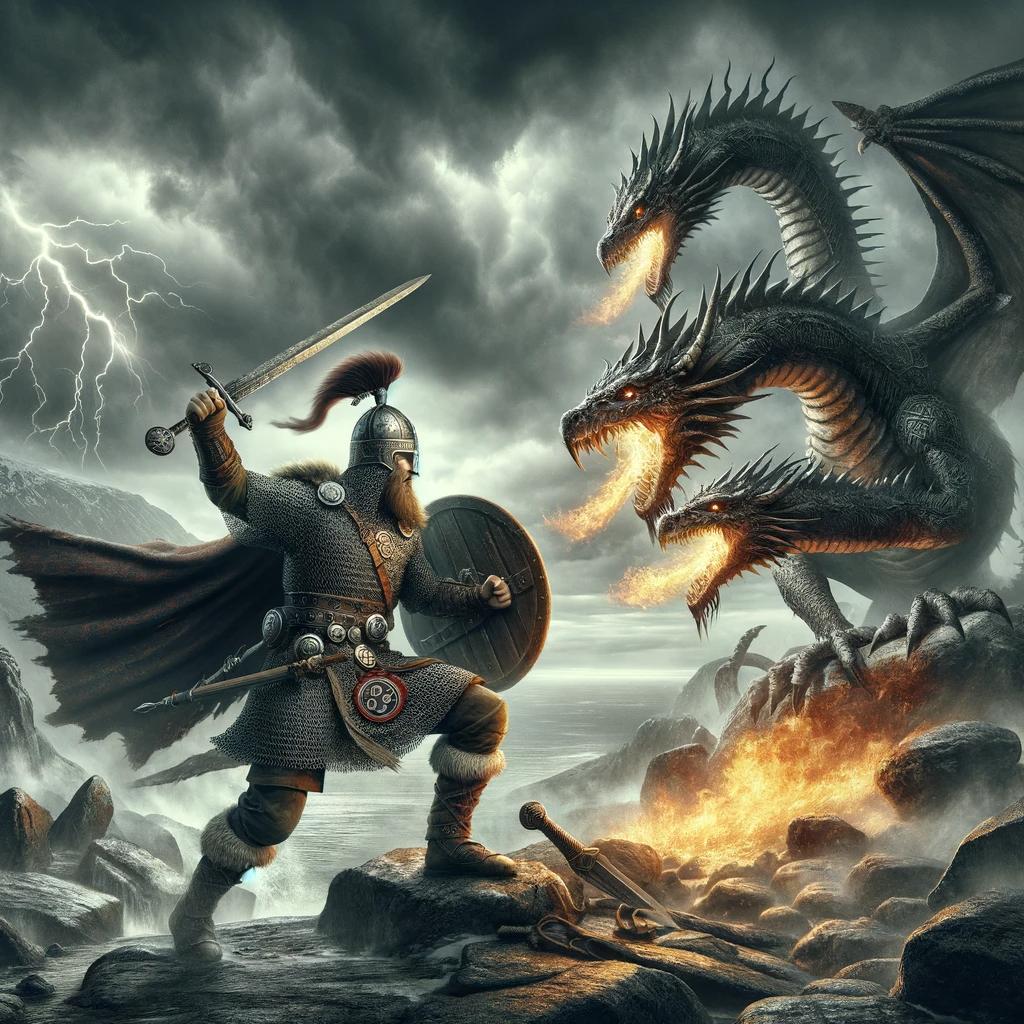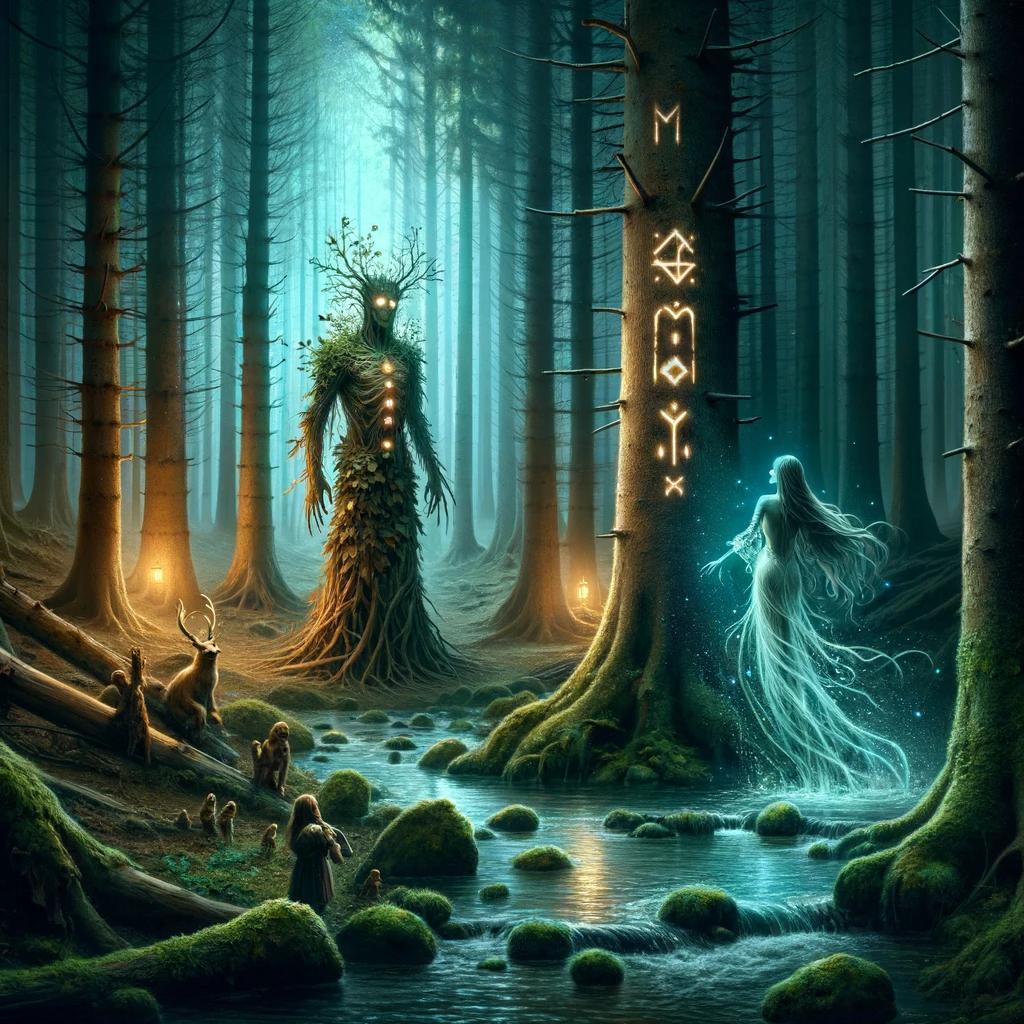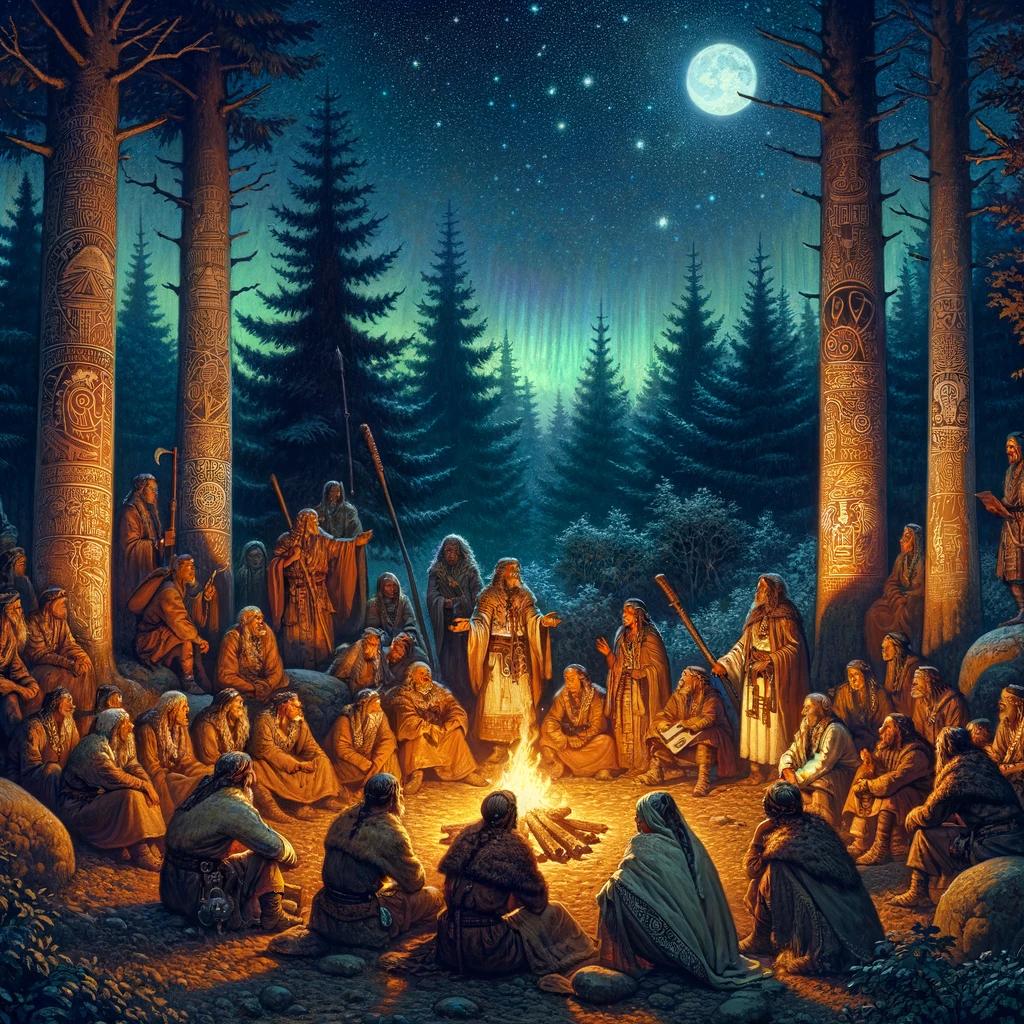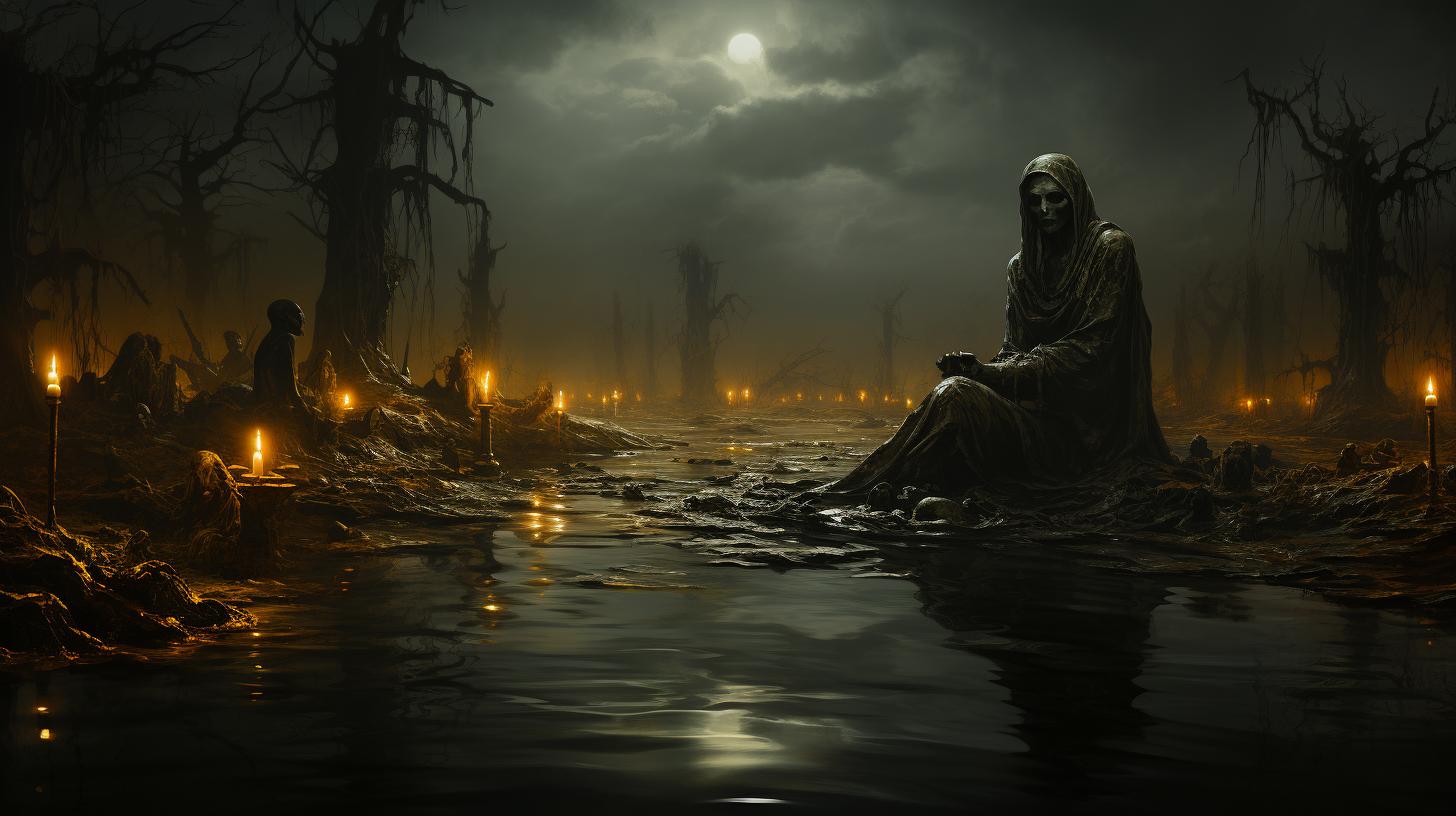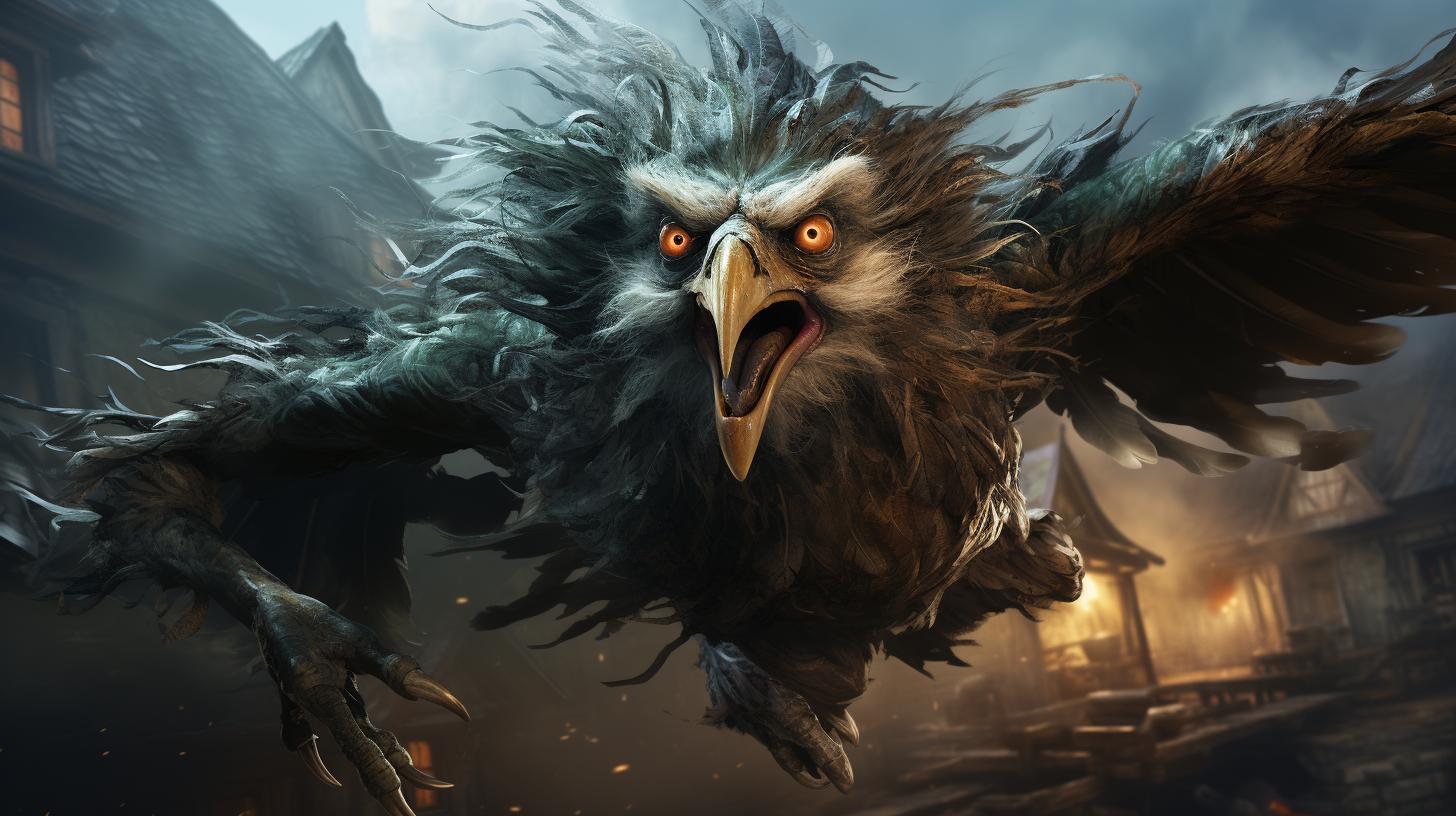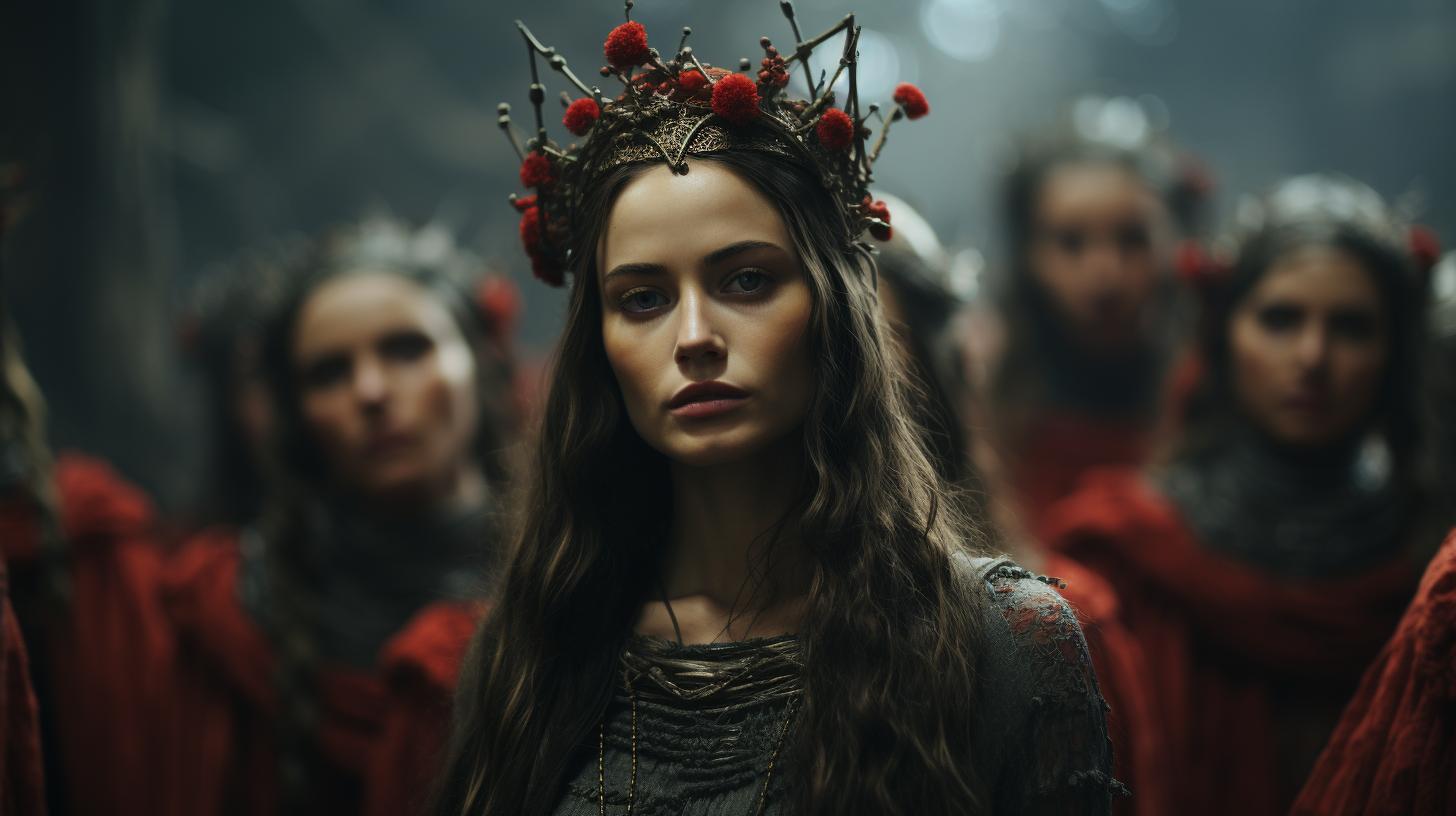Slavic Mythology Vs Norse: A Comparative Analysis of Ancient European Mythologies
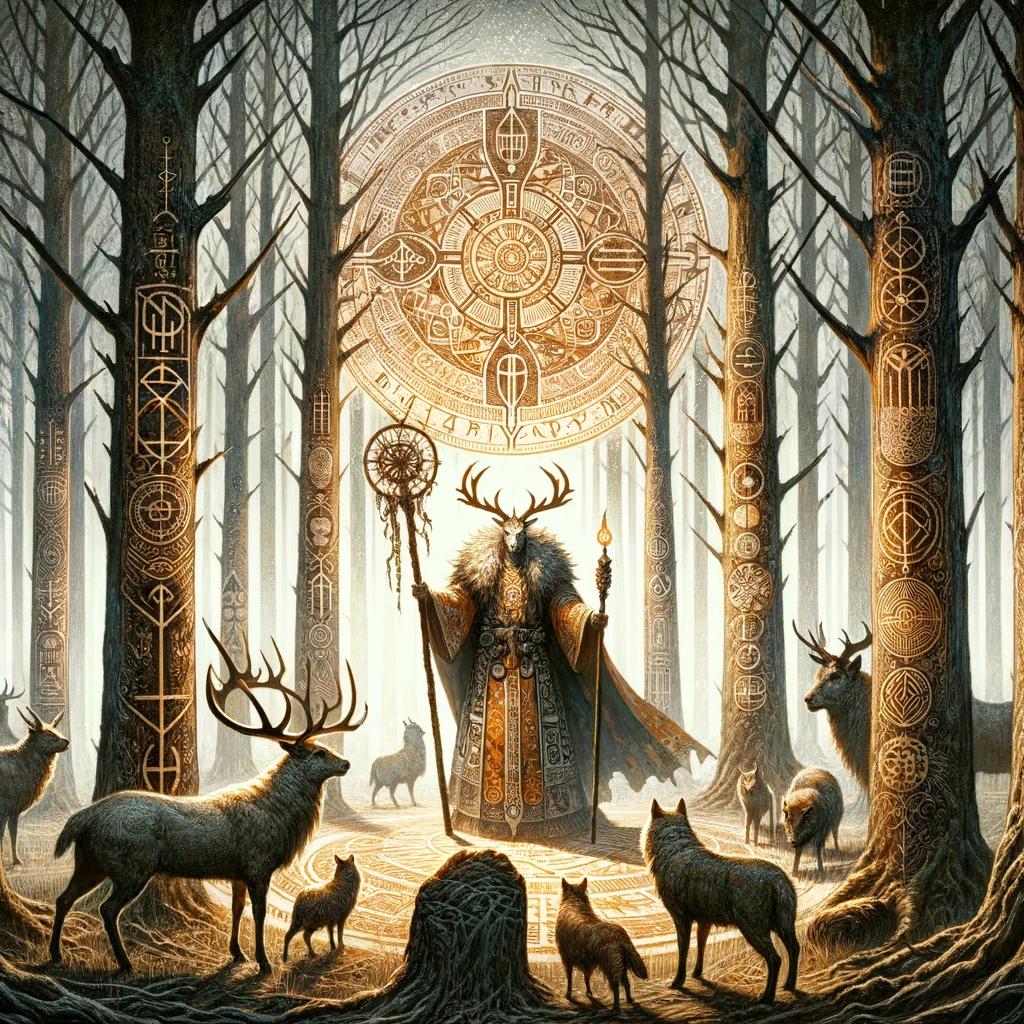
Slavic Mythology and Norse Mythology, two ancient European belief systems, share fascinating similarities and differences. Explore the origins, deities, worlds, and mythical creatures in both mythologies. Delve into the beliefs and practices of Slavic Paganism and Norse Paganism, and discover their influence in modern culture.
Uncover the rich tapestry of these captivating mythologies, highlighting their unique contributions to the world of ancient European belief systems.
Slavic Mythology vs Norse: A Comparative Overview
Slavic Mythology vs Norse: A Comparative Overview explores the fascinating similarities and differences between the mythologies of Slavic and Norse cultures. By tracing their origins and development, we gain insight into the rich belief systems that shaped these ancient European civilizations.
Origins and Development of Slavic Mythology
The origins of Slavic Mythology can be traced back to the ancient Slavic tribes inhabiting Eastern Europe. With a pantheon of gods and goddesses, Slavic mythology evolved alongside the culture, incorporating beliefs, rituals, and cosmology that reflected the lives and experiences of the Slavic people.
Origins and Development of Norse Mythology
Norse Mythology emerged from the pre-Christian traditions of the Germanic tribes inhabiting the Scandinavian region. Rooted in the poetic and heroic Eddic and Skaldic traditions, Norse mythology revolves around the tales of powerful gods, epic battles, and tales that explore the cycles of life and the cosmos.
Commonalities and Differences between Slavic and Norse Mythologies
- Both mythologies feature pantheons of gods and goddesses, embodying different aspects of life and nature.
- Slavic mythology emphasizes the connection between nature, ancestor veneration, and agricultural practices, while Norse mythology emphasizes heroic deeds, destiny, and the cycle of life and death.
- Both mythologies refer to the existence of a World Tree, symbolizing the interconnectedness of the cosmos and different realms.
- Slavic and Norse mythologies both have belief systems that encompass a variety of creatures, such as dragons and giants, reflecting a deep connection between the natural and supernatural worlds.
By exploring these commonalities and differences, we gain a deeper understanding of the unique cultural perspectives and spiritual beliefs that have shaped these ancient mythologies.
Gods and Goddesses in Slavic Mythology
In Slavic mythology, a rich pantheon of gods and goddesses exists, each with their own unique roles, characteristics, and significance. These deities played a central role in the lives of the Slavic people, governing various aspects of nature, fertility, and human existence.
Main Deities in Slavic Mythology
Among the main deities in Slavic mythology are:
- Perun: Known as the god of thunder and lightning, Perun is often depicted as a mighty warrior wielding a hammer, similar to the Norse god Thor.
- Veles: Veles is associated with the underworld, magic, and earth.
He plays a crucial role in the cycle of life, death, and rebirth.
- Živa: Živa represents fertility, youth, and vitality. She is often associated with agriculture, livestock, and abundance.
Roles and Characteristics of Slavic Gods and Goddesses
Each Slavic deity possesses distinct characteristics and fulfills specific roles.
For instance:
- Perun, the god of thunder, symbolizes strength, protection, and justice. He is revered as a defender against evil forces.
- Veles, the god of the underworld, embodies wisdom, trickery, and the duality of life.
He is both feared and respected by the Slavic people.
- Živa, the goddess of fertility, embodies beauty, vitality, and growth. She is invoked for bountiful harvests and the well-being of livestock.
These gods and goddesses form the foundation of Slavic mythology, shaping the beliefs and practices of the Slavic people for centuries.
Exploring their stories provides insights into the cultural and spiritual fabric of Slavic society.
The year is 2023.
Gods and Goddesses in Norse Mythology
The mythology of the ancient Norse civilization encompassed a diverse pantheon of gods and goddesses. This section delves into the main deities revered in Norse mythology and explores their roles and characteristics.
Main Deities in Norse Mythology
In Norse mythology, several deities held prominent positions in the pantheon. The most well-known gods include:
- Odin, the Allfather and ruler of Asgard
- Thor, the god of thunder and son of Odin
- Loki, the mischievous trickster
- Frigg, the queen of Asgard and wife of Odin
- Baldr, the shining god of light
Roles and Characteristics of Norse Gods and Goddesses
Each Norse deity possessed unique qualities and played specific roles in the divine realm.
For example:
- Odin was associated with wisdom, war, and poetry
- Thor wielded his mighty hammer, Mjölnir, and protected both gods and humans from threats
- Loki, although often causing mischief, also assisted the gods with his cunning
- Frigg was known for her maternal nature and wisdom
- Baldr was adored for his beauty and purity
The Norse gods and goddesses represented various facets of life and served as inspirations for warriors, poets, and those seeking guidance and protection in their daily lives.
The World in Slavic Mythology
Slavic Mythology offers a captivating worldview steeped in ancient beliefs and symbolism. This section explores the creation of the world and the concept of the Tree of Life in Slavic Mythology.
The Creation of the World in Slavic Mythology
According to Slavic Mythology, the world came into existence through the efforts of the primordial deities. The universe began with the emergence of Rod, the supreme god, who brought order to chaos and created the celestial realm, known as Svarog’s Forge.
Rod then formed the earthly realm, setting the stage for life to flourish.
The Tree of Life in Slavic Mythology
The Slavic Mythology includes the concept of the Tree of Life, symbolizing the connection between different realms. This sacred tree, often depicted as a colossal oak, stands at the center of the universe, linking the heavens, earth, and the underworld.
It represents the axis mundi, providing a bridge for communication between the divine, mortal, and spirit realms.
In Slavic Mythology, the Tree of Life serves as a source of wisdom, guidance, and spiritual energy.
Its branches reach towards the heavens, where the gods reside and grant favors to those who seek their blessings. The roots delve deep into the underworld, connecting with ancestral spirits and the cycle of life and death.
Overall, the Slavic Mythology presents a rich cosmology that portrays the interconnectedness of all things through the creation of the world and the symbol of the Tree of Life. These beliefs provide insight into the Slavic worldview and their reverence for the divine forces that shape existence.
The World in Norse Mythology
The world in Norse mythology is a fascinating and intricate concept that holds great significance. Understanding the creation and structure of the Norse cosmos is crucial to comprehending the beliefs and stories of the gods and their interactions with mortals.
This section explores the origins of the world in Norse mythology and delves into the concept of Yggdrasil, the World Tree.
The Creation of the World in Norse Mythology
In Norse mythology, the creation of the world begins with the primordial void, Ginnungagap, and the clash of the elements of fire and ice. From this collision, the first being, Ymir, is born.
The subsequent creation involves the formation of the various realms, including the realm of humans, Asgard, home of the gods, and other realms inhabited by mythical creatures and spirits.
Yggdrasil: The World Tree in Norse Mythology
A central aspect of the Norse cosmos is Yggdrasil, the World Tree.
Yggdrasil is an immense ash tree that connects and sustains the Nine Worlds, including Asgard, Midgard (the realm of humans), and Helheim (the realm of the dead). Its branches extend across the heavens, while its roots reach into the depths of the earth and the realm of the underworld.
Yggdrasil acts as a cosmic axis, providing a link between realms and facilitating communication between gods, humans, and other beings.
- The creation of the world involves the clash of fire and ice in Ginnungagap.
- Yggdrasil, the World Tree, serves as a vital connection between the Nine Worlds.
- Yggdrasil symbolizes the interconnection and interdependence of all things in the Norse cosmos.
- The concept of the World Tree reflects the Norse belief in a layered and structured cosmology.
Mythical Creatures in Slavic Mythology
Slavic Mythology is rich in a variety of mythical creatures that play significant roles in the folklore and beliefs of ancient Slavic culture.
Popular Mythical Creatures in Slavic Mythology
- Leshy: A forest spirit who guards the wilderness and possesses shapeshifting abilities.
- Vodyanoy: A water spirit often depicted as an old man who dwells in bodies of water and can cause floods or drownings.
- Domovoi: A household spirit responsible for the protection and well-being of a family.
- Baba Yaga: A witch-like figure who resides in a hut on chicken legs and is known for her wisdom, magical powers, and unpredictable nature.
Roles and Significance of Mythical Creatures in Slavic Mythology
- These mythical creatures represent the connection between the natural world and the spiritual realm.
- They are believed to possess supernatural powers and influence various aspects of human life, including nature, fertility, and protection.
- Many of these creatures serve as guardians or avengers, either bringing fortune and aid or causing misfortune and punishment.
- Slavic mythology views these creatures as intermediaries between humans and the divine, often involved in the balance of cosmic forces.
Mythical Creatures in Norse Mythology
Mythical creatures play a significant role in Norse mythology, adding depth and wonder to its rich tapestry of stories and legends.
Popular Mythical Creatures in Norse Mythology
- Jörmungandr: The gigantic sea serpent, also known as the Midgard Serpent, who encircles the world and is one of the children of the trickster god Loki.
- Fenrir: A monstrous wolf and son of Loki, destined to bring destruction during Ragnarok, the apocalyptic event in Norse mythology.
- Valkyries: Divine female warriors who select the fallen warriors on the battlefield and bring them to Valhalla, the great hall of slain heroes.
- Dwarves: Skilled craftsmen, known for their exceptional talent for forging weapons and treasures.
- Einherjar: The spirits of slain warriors who reside in Valhalla and prepare for the final battle of Ragnarok.
Roles and Significance of Mythical Creatures in Norse Mythology
These mythical creatures embody various aspects of the Norse worldview and contribute to the themes of heroism, fate, and the eternal struggle between chaos and order.
- The Midgard Serpent represents the ever-present threat of chaos and destruction lurking beneath the surface.
- Fenrir symbolizes the uncontrollable forces of nature and the inevitable cycle of life and death.
- Valkyries embody the celebration of heroic deeds and the promise of an afterlife in Valhalla.
- Dwarves showcase the importance of craftsmanship and the creation of powerful weapons and artifacts.
- The Einherjar reflect the Norse belief in an eternal struggle against evil, as they hone their skills and await their final battle.
These mythical creatures deepen the narrative and provide insights into the complex and fascinating universe of Norse mythology.
Beliefs and Practices in Slavic Paganism
Slavic Paganism encompasses a rich array of beliefs and practices that were central to the spiritual lives of the ancient Slavic people. This section explores the worship and rituals as well as offerings and sacrifices in Slavic Paganism.
Worship and Rituals in Slavic Paganism
Worship in Slavic Paganism involved various rituals and ceremonies to honor and communicate with the gods. These rituals often took place in sacred spaces such as groves, temples, or shrines. Offerings such as food, drink, and precious objects were made to appease the gods and seek their blessings.
Devotees engaged in prayers, chants, and dances as forms of worship, expressing their gratitude and reverence for the divine.
Offerings and Sacrifices in Slavic Paganism
Offerings played a significant role in Slavic Paganism as a means of establishing a connection with the gods. These offerings could include crops, livestock, or symbolic items. Sacrifices, particularly animal sacrifices, were also an integral part of certain rituals.
The belief was that by giving up something of value, devotees demonstrated their loyalty and devotion to the gods, hoping to receive their favor and protection in return.
Overall, the beliefs and practices in Slavic Paganism reflect a deep connection with the natural world and a strong sense of communal and ancestral reverence.
These rituals and offerings formed a vital part of the religious and spiritual lives of the ancient Slavic people, demonstrating their commitment to their gods and seeking divine guidance and blessings.
Beliefs and Practices in Norse Paganism
Beliefs and Practices in Norse Paganism encompass a rich tapestry of worship and rituals. This ancient Germanic belief system revolves around the veneration of powerful gods and the interconnectedness of the natural world.
Worship and Rituals in Norse Paganism
- Norse pagans engage in regular worship to honor their gods and strengthen their bond with the divine.
- Blót, a central ritual, involves offering to the gods through animal sacrifices. These sacrifices were seen as a reciprocal exchange between humans and deities.
- Group gatherings, called hóf, play a significant role in Norse pagan worship.
These communal rituals foster a sense of community, offering opportunities for socializing, storytelling, and sharing knowledge.
- Prayers and songs are integral parts of Norse pagan worship, allowing individuals to communicate with the gods and express their devotion.
Offerings and Sacrifices in Norse Paganism
- Animal sacrifices, known as blót, are a crucial aspect of Norse pagan offerings.
Livestock, such as horses, cows, and pigs, were chosen as sacrificial animals to honor the gods and secure their favor.
- Other offerings include food, drink, and valuable objects. These offerings symbolize generosity, gratitude, and reciprocity toward the divine.
- The act of offering involves the physical presentation of gifts at sacred spaces, such as altars or designated outdoor sites, where the gods are believed to be present.
- An essential concept in Norse pagan offerings is Gebo, the principle of reciprocal giving.
The offering of gifts creates a bond between the giver and the recipient, reinforcing the relationship with the gods.
These beliefs and practices provide a glimpse into the intricate world of Norse paganism, emphasizing the reverence for deities and the importance of communal worship.
The ancient customs and rituals continue to inspire and shape modern interpretations of Norse mythology in various cultural contexts.
Norse Mythology vs Slavic Mythology: A Modern Perspective
In the modern world, the influences and revivals of Norse and Slavic mythologies have captured the imagination of many. Both mythologies have made significant impacts on various aspects of modern culture, from literature and art to movies and video games.
Let’s explore the influence and revival of Norse mythology in modern culture, as well as the resurgence of Slavic mythology.
Influence and Revival of Norse Mythology in Modern Culture
- Norse mythology has gained immense popularity through works like J.R.R.
Tolkien’s “The Lord of the Rings” and Neil Gaiman’s “American Gods,” which prominently feature Norse gods and themes.
- Marvel Comics’ Thor, portrayed in the Marvel Cinematic Universe, has brought Norse mythology to a global audience, sparking a renewed interest in the ancient tales.
- The popularity of Viking-themed TV shows like “Vikings” and “The Last Kingdom” has further contributed to the resurgence of Norse mythology.
Influence and Revival of Slavic Mythology in Modern Culture
- Slavic mythology has started to gain recognition with the success of Andrzej Sapkowski’s “The Witcher” book series and its adaptation into a popular Netflix show.
The series draws heavily from Slavic folklore and mythology.
- Video games such as “God of War” and “Kingdom Come: Deliverance” have integrated elements of Slavic mythology into their narratives, introducing players to the rich and enchanting world of Slavic folklore.
As we embrace the digital age, the internet has served as a platform for enthusiasts to share and explore both Norse and Slavic mythologies.
Online communities, forums, and social media have allowed for the exchange of knowledge, art, and creative reinterpretations of these ancient belief systems.
.












